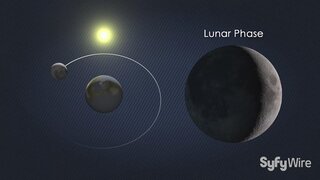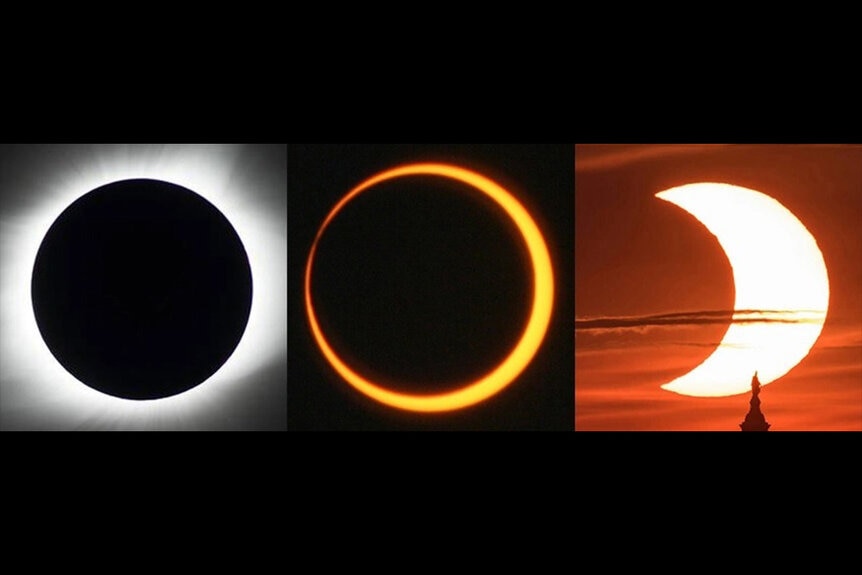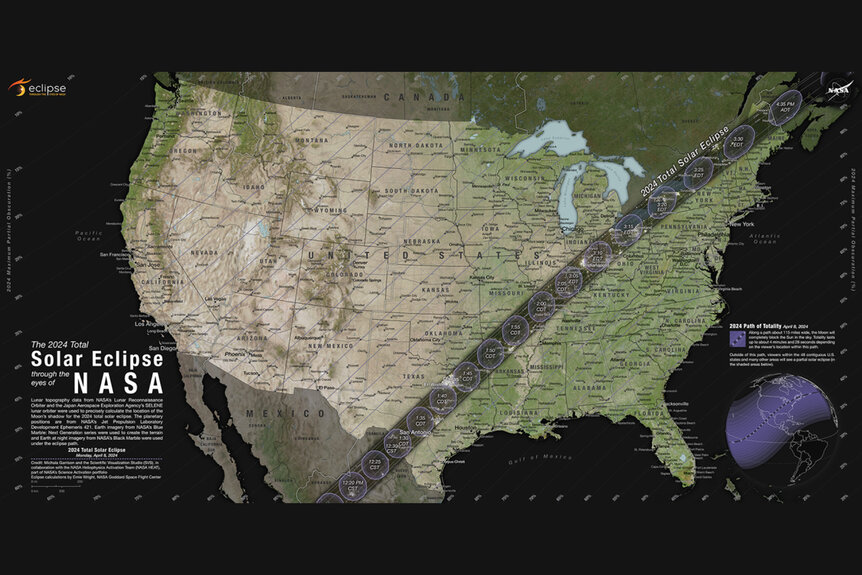Create a free profile to get unlimited access to exclusive videos, sweepstakes, and more!
Everything to Know About April's Solar Eclipse, Including Where to Get Free Eclipse Glasses
There won't be another total solar eclipse visible from the U.S. until 2044.
In 2006, a total solar eclipse offered a moment of global unity and unleashed a wave of supernatural abilities within otherwise ordinary people in NBC’s Heroes, streaming now on Peacock.
In the real world solar eclipses don’t unlock latent superpowers (that we know of) but they’re pretty good for unity. Next month, a total solar eclipse will cut a path across the North American continent, plunging millions of people into the Moon’s shadow all at the same time.
For More on the Sun:
The Sun Opened Up a Solar Wind-Spewing Coronal Hole 60 Times the Size of Earth
Solar Maximum Will Be Earlier, Stronger, and Last Longer
Earth Narrowly Missed a Solar Storm "Apocalypse" in 2012
What Is an Eclipse and How Do They Happen?
Eclipses are the result of a bit of fortunate celestial happenstance. The Sun is almost exactly 400 times the size of the Moon and it’s almost exactly 400 times farther away. The upshot is that the Sun and Moon appear the same size in the sky from our perspective. Any time that the Sun, the Moon, and the Earth create a straight line, we get an eclipse.
When the Moon gets directly between the Earth and the Sun, you get a lunar eclipse. When the Earth gets directly between the Sun and the Moon, you get a lunar eclipse. And as the astronomer Katie Mack once said, if the Sun gets directly between the Earth and the Moon, you get an apocalypse. If the Moon’s orbit were a perfect circle and if it orbited in the same plane as the Earth, they’d line up all the time and we’d get an eclipse every month, but it doesn’t, and we don’t.
Because the Moon’s orbit is tilted about 5 degrees from the Earth’s plane, the Sun and Moon just skirt past one another from our point of view and the Moon’s shadow misses the planet. Despite the tilt, there are two points where the orbits intersect and an eclipse is possible. Every six months or so things line up just right and we enter an eclipse season. During eclipse season, we can get as many as 5 eclipses, but usually fewer. The sort of eclipse we get depends on a handful of factors.
First is the phase of the Moon. Solar eclipses only happen during the New Moon and lunar eclipses only when the Moon is full. Where the Moon is in its orbit and how closely everything lines up also play parts. Remember, the Moon’s orbit isn’t circular, it’s slightly squashed. Sometimes, the Moon is a little closer to the Earth (perigee) and sometimes it's farther away (apogee). If the Moon is at apogee during a solar eclipse, it will pass in front of the Sun but be too small in the sky to fully obscure it. That’s called an annular eclipse.
Even if the Moon is at perigee, it might not hit the solar bullseye just right. If the Sun and Moon have a glancing blow in the sky, we get a partial solar eclipse. Only when things line up just right do we get a total solar eclipse like the one happening April 8, 2024.
How to See April's Total Solar Eclipse
April’s total solar eclipse will happen about midday on April 8. The Moon’s shadow will first make contact with the planet over the Pacific Ocean. It will make landfall on Mexico’s west coast and travel northeast to Texas, Oklahoma, Arkansas, Missouri, Illinois, Kentucky, Indiana, Ohio, Pennsylvania, New York, Vermont, New Hampshire, and Maine. Finally, it will cross the border to Canada, casting its shadow across Southern Ontario, Quebec, New Brunswick, Prince Edward Island, and Cape Breton, before sliding into the Atlantic.
The show starts in Texas at 12:23 Central when the Moon first brushes up against the Sun. It will take about an hour and 20 minutes for the Moon to slowly swallow the Sun and blanket the Earth in shadow. Totality will last for about 4 and a half minutes, almost twice as long as the period of totality during the 2017 total solar eclipse. After totality, the Sun will slowly reemerge, and the eclipse will end at 3:02 Central.
The timeline shifts just a little later as the Moon’s shadow moves along the path of totality. Skywatchers in Oklahoma will experience totality a few minutes later and observers in Maine will hit totality at about 3:32 p.m. Eastern, roughly an hour after it happens in Texas.
How to Watch an Eclipse Safely
Seeing a total solar eclipse is a once in a lifetime experience with a unique set of safety requirements. The only safe time to observe an eclipse directly is during totality, the few moments when the Sun is totally covered by the Moon. Any other time, eclipses can only be observed using specialized eye protection or indirect observing methods.
RELATED: Standing under the shadow of the Moon: Thoughts on totality
Never use binoculars or a telescope to view an eclipse even when wearing eclipse glasses. The filter on eclipse glasses isn’t strong enough to protect you from concentrated sunlight. Viewing through telescopes and binoculars is possible but requires a different type of sunlight filter.
If you don’t have protective eyewear handy, that doesn’t mean you’re out of luck. Indirect viewing methods like pinhole cameras are a great way to watch an eclipse without risking your eyesight. All you have to do is poke a small hole in a piece of paper or other material and let sunlight shine through it onto a surface. In a pinch, you can get by with a colander, the holes will create dozens of pinhole cameras and you can take your pick. Even the gaps in the leaves of trees will create naturally occurring pinhole cameras and paint hundreds of tiny eclipses across the pavement.
Where to Get Free Eclipse Glasses
Eclipse glasses are among the most common types of protective eyewear. They are affordable, compact, and readily available.
Glasses supplier Warby Parker is giving away a free pair of ISO-certified solar eclipse glasses at every Warby Parker store beginning April 1. Glasses will be available through April 8, while supplies last. Similarly, MyEyeDr is partnering with the non-profit Prevent Blindness to give away 90,000 pairs of eclipse glasses in its more than 400 locations.
If they run out before the big day, and they probably will, you can often find eclipse glasses at local museums or libraries. If you’re planning to watch the eclipse (and why wouldn’t you?), you might want to pick up some glasses now. It’s possible that supplies will run low and you may not be able to get them as the big day approaches. If you’ve got glasses left over from the 2017 eclipse, they’ll work just as well this time, but check them out before use and discard if they are damaged.
In addition to eye safety, you’ll want to prepare for the elements. You’re going to be outside staring at the Sun for hours and it will only be significantly covered for a few minutes. Wear sunscreen and a hat, don’t forget to pack water and snacks, and enjoy the show!
In the meantime, catch Heroes in its entirety, streaming now on Peacock.
Originally published Mar 4, 2024.
































